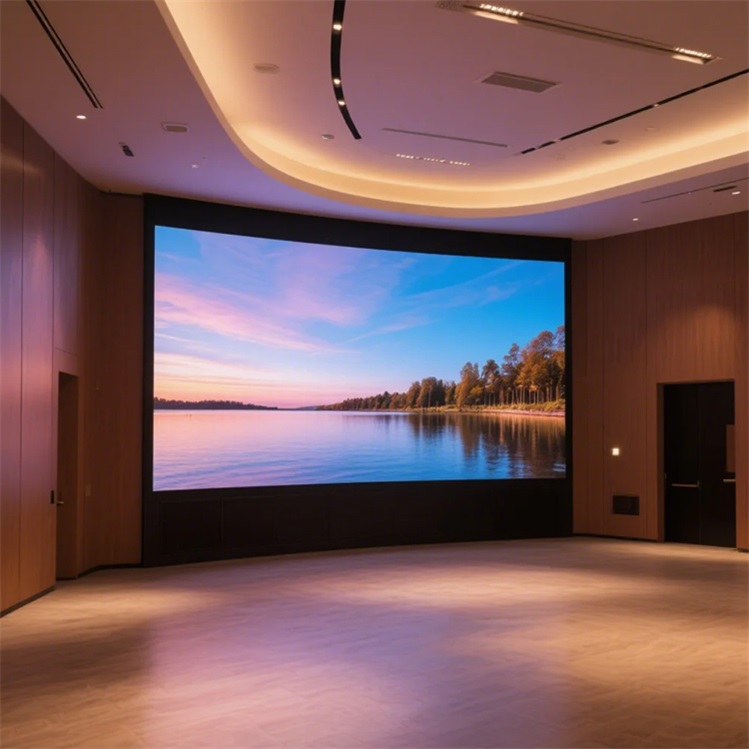Grayscale, also known as color scale or gray scale, refers to the brightness variation of LED pixels. In the LED display industry, it specifically refers to the brightness variation of a display from its darkest to brightest state. Grayscale is the grayscale level, which is the number of steps in this process. The more steps there are, the smoother and more natural the transition from black to white.
How is grayscale represented?
Grayscale levels are typically expressed in bits, expressed as “2 to the power of n.” First, 1 bit has only 2¹ = 2 levels: bright and off. This allows only the simplest patterns and text to be displayed, without any intermediate transitions. Second, 8 bits have 2⁸ = 256 grayscale levels. This means each primary color (red, green, and blue) can have 256 different brightness levels.
LED displays typically feature high-bit-depth grayscale, such as 10-bit (1024 levels), 12-bit (4096 levels), 14-bit (16384 levels), and even 16-bit (65536 levels). Most LED displays has at least 14bit grayscale. The 14bit grayscale represents the number of grayscale levels, meaning the LED screen can display 2¹⁴=16384 different variations in brightness from dark to bright. High-bit-depth grayscale allows for smoother and more detailed color transitions, especially when displaying gradient colors (such as sky and shadows).


How does grayscale affect display effects?
1. Color Depth
Color depth is one of the key indicators that determines grayscale levels. Each pixel on an LED display is composed of three sub-pixels: red (R), green (G), and blue (B). These sub-pixels produce various colors by combining different brightness levels. The calculation formula is: Total number of colors = Red level × Green level × Blue level.
Take 8bit grayscale as an example
- Red has 256 brightness levels.
- Green has 256 brightness levels.
- Blue has 256 brightness levels.
Therefore, the total number of colors that can be combined is: 256 × 256 × 256 = 16,777,216 colors, which is commonly referred to as 16 million colors. Even with 14-bit grayscale: 16,384 × 16,384 × 16,384 = 4,398,046,511,104 colors, a whopping 4.3 trillion colors. In short, the higher the grayscale level, the richer the colors that can display, and the more realistic the color reproduction.
2.Layering and uniformity
The second key indicator for grayscale quality is the depth and uniformity of the displayed image. Grayscale depth represents vertical depth (from black to white), which allows for the display to display image detail and authenticity without noticeable color blocks or discontinuities. Furthermore, it offers excellent detail restoration. Even at extremely low brightness levels, LED displays can clearly display dark details without a blackout or loss of detail.
Grayscale uniformity refers to the consistency of brightness and color across any area of the screen when displaying the same grayscale level. When performing brightness and color calibration on LED displays, the goal is to achieve greater brightness and color consistency across the entire screen, effectively reduce the phenomenon of “pockmarks” and “blurred screens”. This uniformity is horizontally consistent, ensuring a pure image and consistent color reproduction.
What factors affect the grayscale of LED displays?
Many factors affect the grayscale of LED displays, the most common of which are:
- Driver IC. The driver chip is the core of grayscale control. High-quality chips achieve a balance between high refresh rate and high grayscale. Using low-quality chips may result in grayscale loss.
- Refresh rate: LEDs are light-emitting diodes, and unlike light bulbs, they cannot smoothly adjust brightness by varying the current (which would cause color shift). Therefore, LED displays generally use pulse-width modulation (PWM) technology to control grayscale. If the refresh rate is too low (less than 1920Hz), high-grayscale images are prone to scan lines. Therefore, high-definition displays must meet the flicker-free standard of ≥3840Hz.
- LED lamp consistency. Different LED lamps in the same display can cause inconsistent grayscale performance of some pixels, resulting in localized brightness or darkness, and reduced image detail.
- Control system (sending card/receiving card): The control system is responsible for converting the “image signal” into a “grayscale control signal.” Low-performance control systems may not be able to process high-grayscale data of 12 bits or above, resulting in “grayscale compression” (actually outputting at 8 bits).
Therefore, when choosing the right LED display, grayscale is a crucial core indicator, directly impacting the audience’s visual experience. For high-end cinemas and conference rooms, choose a display that supports high grayscale (e.g., 14-bit or higher) and a high refresh rate (typically 3840Hz or higher).
